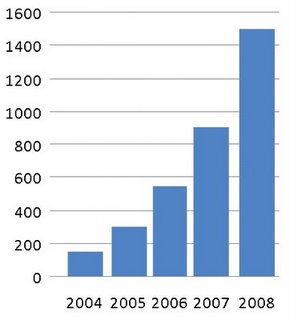Hitting 40 languages
Or take Russian, where words change depending on their placement and role in a sentence. In Russian, for example [pizza in Moscow] is [пицца в Москве] but [pizza near Moscow] is [пицца рядом с Москвой].
Then there's the whole challenge of ensuring that results are locally relevant. While many Australians searching for [freedom] are looking for the Australian furniture chain, UK and US users are often looking for the definition of the word itself. Our search results, then, have to take into account these local differences.
Our efforts to make Google products available in as many languages as possible dates to 2001, when we started Google in Your Language, which lets volunteers translate and edit translations of Google products in their native languages.
As more and more users, advertisers, and partners interact with Google across the world, the need for local products has become even more obvious. In 2007, we undertook a company-wide initiative to increase the availability of our products in multiple languages. We picked the 40 languages read by over 98% of Internet users and got going, relying heavily on open source libraries such as ICU and other internationalization technologies to design products. Do you need web search in Chinese or AdWords online support in Spanish? Perhaps Google News in Hindi or Google Scholar in Korean? Not a problem.
Here's a taste of how far we've come.

- 30 in 30: Today we have more than 30 products in more than 30 languages, up from 5 products in 30 languages just a year ago.
- In 2004, we had 150 local-language versions of various products (e.g. a product local to the UK, not just the English-speaking world); today we're at more than 1500.
- From January to March of 2008, we launched 256 local-language versions of various products, compared to 55 in the same period of 2007.
- We've upgraded to Unicode 5.1 to make sure that we can handle any characters people read or write in.
The web is only useful - or utile, , poyteczny, or nyttig, depending on what language you speak - to the degree it can be accessible in your language. That's why we're so excited about how far we've come - and why we know there's still a lot of work to be done.
Mario Queiroz, Vice President, Product Management, Europe, Middle East, Africa, Latin America
googleblog.blogspot.com
published @ September 1, 2008